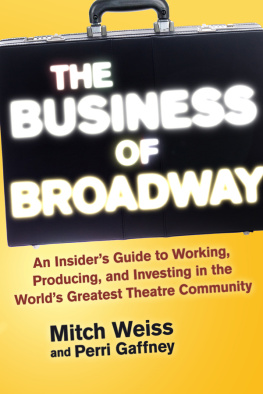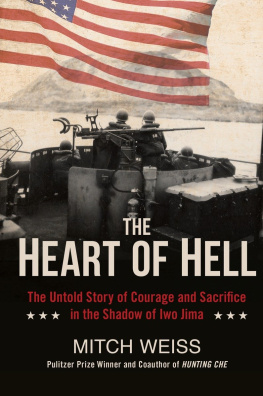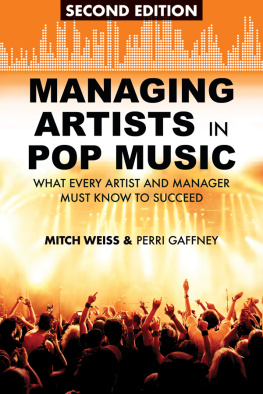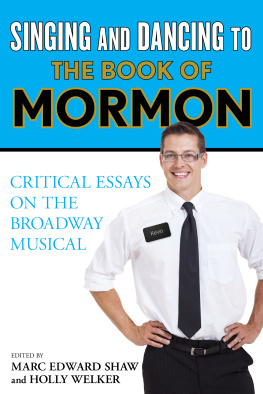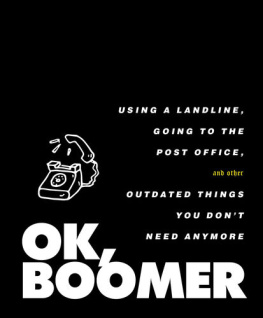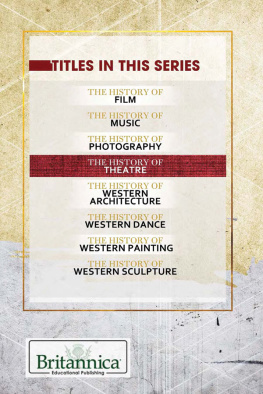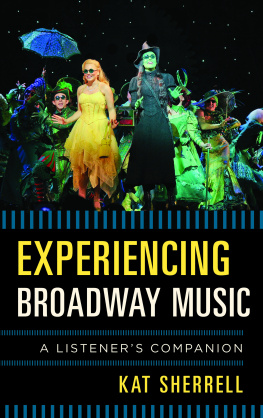Copyright 2015 by Mitch Weiss and Perri Gaffney
All rights reserved. Copyright under Berne Copyright Convention, Universal Copyright Convention, and Pan American Copyright Convention. No part of this book may be reproduced, stored in a retrieval system, or transmitted in any form, or by any means, electronic, mechanical, photocopying, recording or otherwise, without the express written consent of the publisher, except in the case of brief excerpts in critical reviews or articles. All inquiries should be addressed to Allworth Press, 307 West 36th Street, 11th Floor, New York, NY 10018.
Allworth Press books may be purchased in bulk at special discounts for sales promotion, corporate gifts, fund-raising, or educational purposes. Special editions can also be created to specifications. For details, contact the Special Sales Department, Allworth Press, 307 West 36th Street, 11th Floor, New York, NY 10018 or .
19 18 17 16 15 5 4 3 2 1
Published by Allworth Press, an imprint of Skyhorse Publishing, Inc.
307 West 36th Street, 11th Floor, New York, NY 10018.
Allworth Press is a registered trademark of Skyhorse Publishing, Inc., a Delaware corporation.
www.allworth.com
Cover design by Chris Ritchie.
Library of Congress Cataloging-in-Publication Data is available on file.
Print ISBN: 978-1-62153-465-5
Ebook ISBN: 978-1-62153-476-1
Printed in the United States of America.
TABLE OF CONTENTS
ACKNOWLEDGMENTS
Special thanks for their support and knowledge (in no particular order): Harrison Lee, Nancy Gibbs, Nina Skriloff, Marcia Goldberg, Peter Bogyo, Bob Reilly, Susan Sampliner, Richard Backer, Susan L. Schulman, George Forbes, Tina Fabrique, Nick Kaledin, all ATPAM staff, David M. Conte, Jason Laks, Darnelle Radford, Gail West, Syra and Marty Weiss, and all of the professional interviewees in . We would like to thank the staffs of NYCs Signature Theatre (W. 42nd St./10th Ave.), Starbucks (8th Ave./W. 43 St.), Astor Row Cafe (W. 130th St./Lenox Ave.), Lenox Saphire (W. 127th St./Lenox Ave.), and Corner Social (W. 126th St./Lenox Ave.) for their hospitality during the writing of this book. Apologies to the excellent, talented people, friends, and colleagues who contribute so much to the Broadway theatre but were not mentioned in this book.
Charts designed by Rachel W. Gozhansky: Whos in Charge? ().
Photo Credits
Choclattjared by Kimneak Arnold Photography
Christopher Recker by Greg Joskin
Chuck Cooper by Deborah Brevoort
David Henry Hwang by Lia Chang Photography
Deidre Goodwin by Bran Amundson
Harrison Lee by Dorothy Shi
Karen Mason by Stephen Mosher
Mitch Weiss by Carol Rosegg
Nancy Piccione by Michele Piccione
Paul Libin by MDT Photo
Perri Gaffney by Fredric Michaels
Peter Bogyo by Nan Melville
Ron Raines by Carol Rosegg
Stephen Tyrone Williams by Courtney B. Vance
Thomas Grasso by Carmen Milagro
Tina Fabrique by James E. Alexander
Arthur French, Count Stovall, Islah Abdul-Rahim, Lawrence Darden, and Woodie King, Jr. by Perri Gaffney
Adrian Bryan-Brown, Bob Reilly, Christopher Nass, David Calhoun, Janice Rodriguez, and Richard Frankel by Mitch Weiss
INTRODUCTION: Footnotes before Footlights
Unless you already work on Broadway, there are few ways to learn how it operates. This book shares information not readily available to the general public. This information is derived from current 2014 and 2015 industry rulebooks, union websites, the authors firsthand knowledge, Broadway professionals, and common practice. The experiential advice and opinions, unless otherwise designated, belong solely to the authors.
Spelling theatre vs. theater: Theater is the common American spelling and theatre is the traditional British spelling. All Broadway houses use the British re ending and since this book explores Broadway theatre, thats the spelling that applies throughout this text. The only exceptions are the names of theatrical institutions, such as Joseph Papps Public Theater in New York, that have transferred productions from their theater companies to a Broadway theatre.
All salaries, fees, and expenses in this book are 2014/2015 numbers and will undoubtedly increase each year.
If the reader wishes to suggest a correction, please join our community discussion at www.JustLearnSomething.us. Each show has its own story, and union regulations change with each negotiation. The authors will be updating material on this website as well.
PART 1
WHAT MAKES BROADWAY TICK
Chapter 1
The Danger Is Thinking You Know More Than You Do
There is great danger in thinking you know more about Broadway than you do. Broadway theatre can provide one of the most exhilarating of experiences, whether you are in the audience, or one of the two hundred people who help to create each fabulous musical or riveting play.
Most of us fall in love with theatre working in our first school production. Its the teamwork, everyone working individually and collectively toward one goal, the results of which are actually attained in a short period of time and enjoyed together. It creates goodwill and camaraderie, a sense of major achievement, and a pride in self and others. In many ways, its similar to a school sports team. No matter how depressing the team scores, or how mediocre the school production, the pride we garner in that joint accomplishment often lasts a lifetime.
The business aspects of Broadway are as impressive as the production values and technology that are unquestionably second to none. The quality and standards of a Broadway production are beyond the scope of theatre most anywhere else because the pool of talent vying for the Broadway stage has no comparison.
Yes, London, England, can boast that the West End in Piccadilly is the breeding ground for transfers to Broadway. Chicagos nonprofit Steppenwolf Theatre Company, or Seattles Seattle Rep, or Washington DCs Kennedy Center can prove a long history of superior productions, many of which have moved to Broadway and have deservedly received Tony Awards. But only New York Citys Broadway district has forty live theatres that earn over a billion dollars annually, entertaining diverse audiences of almost 13 million people from every corner of the globe for all fifty-two weeks of the year.
This is where a playwright knows that his or her work has the best chance to reach the largest audience and receive the best production in the hands of caring and skilled talent. And this is where regional and community theatres, high schools, colleges, and touring venues will find their next production to entertain, educate, and stimulate their audiences.
Only Broadway productions have enough money behind them to sink the Titanic on stage, or fly a helicopter into Saigon, or burn down a house, or fly Spiderman and his nemesis in an aerial chase around the theatre, every night. Only Broadway can afford to bring celebrity film and television stars up close, live, and personal for an extended period of time.
Broadway remains the goal of every new play or musical. Once youve played Broadway, you are suddenly a part of theatre history. Thats why thousands continue to flock to New York in the hope of being a Broadway baby. And after film and television personalities perform on Broadway, they are regarded as serious actors.
Broadway is the Holy Grail for producers around the world. Without inhabiting an official Broadway theatre, no show can call itself a Broadway show. The Tony Awardeligible Broadway district runs north from West 40th Street to West 54th Street between Sixth and Ninth Avenues with only one exception, the Vivian Beaumont Theatre at Lincoln Center for the Performing Arts at West 66th Street. The smallest Broadway theatre has 597 seats (Helen Hayes Theatre) and the largest has 1933 (Gershwin Theatre). In past decades there were Broadway theatres with as few as five hundred seats but it is difficult to pay Broadway wages and expenses with so few seats today. Theatres in Manhattan with less than five hundred seats are considered Off Broadway (99499 seats) or Off-Off Broadway (generally under 99 seats).

